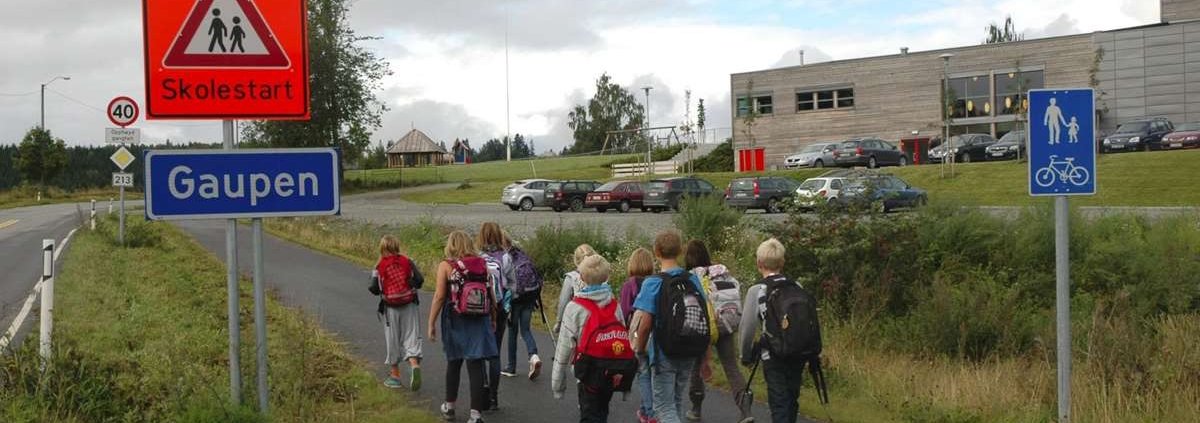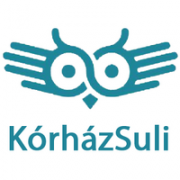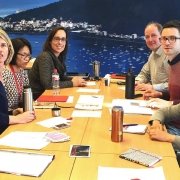Answering the challenges of talented children
Excerpt
Gaupen School in rural Norway has offered individualised learning pathways in primary school for children with learning disabilities and as well as those who are extremely talented, enabling them to study at different levels/grades in different subjects, even studying some subjects at a secondary school. They implement a whole school approach with a holistic view on the learning of the individual child. When it comes to talented children, they take their social maturity and development into consideration when deciding on their path, always in partnership with the parents.
Narrative, origins and objectives of the initiative
What kind of project is this? Please give a short description (summary) of it.
It is not a project, but rather an ongoing general school programme with the starting point that each student gets the right education that brings them one step further in their own learning. In Norwegian educational law all students have the right to customised learning. All students have the right to learning whatever suits his/her needs/level of development. The school says they simply follow their own law.
The programme is based on a school culture that follows the above principles and a methodology that carries it out. The methodology is based on successful theoretical and methodological frameworks. It works with a whole school approach, their own evaluation methodology and working methods based on the collaboration, communication and dedication of school staff, in close collaboration with partner schools, psychological and pedagogical services and the parents.
Please tell us why, in general, this project is considered a successful one?
First of all it is considered successful since Gaupen School is able to provide services that are ensured by law, when at the same time the majority of schools struggle to offering it. Student and parent satisfaction are also important success features. Their work acts as a role model for other schools.
They consider themselves successful because the follow-up children attending their school can see what they achieve.
They also consider their approach successful because the whole school community has taken ownership of it. It is clear not only from school results, but also from the low turnover rate of teachers.
And why would you consider it a grass-roots initiative?
The school implementing the programme is relatively new - it has been there for 10 years. Schools in Norway have a wide autonomy to achieve educational goals. Their approach is on grass-root level since they designed and implemented their own individual practice having the goal of suitable educational provisions for all in sight.
What challenges needed to be solved in this project?
Challenges for teachers were:
- to deal with students that academically challenge them
- to deal with behavioural problems and social immaturity in some cases
- to make all staff understand the challenge and the solution
- to working in a collaborative way
Challenges for school leadership were:
- to build a cooperative and highly professional teacher community
- to provide timetables that make the approach work
- to balance budget
Is this initiative based on any particular theoretical framework? Which one?
- Vygotsky and his Sociocultural Learning theory
- Social Interaction theory
- Cognitive theory
- Neurobiological theory
(Appendix) Is your intervention standing on its own or is it a part of a bigger and more holistic approach?
The programme is a successful answer to the general requirement in Norway to offer inclusive education. While the school works as an autonomous unit, they also work closely together with next levels of education to ensure that the right provisions are in place for all students, and also with the national pedagogical and psychological services to formulate teams supporting those children who struggle in certain areas.
Please describe the group(s) intended as beneficiaries of this initiative
Why has this group (have these groups) been chosen?
No target group was chosen. Instead, a solution was designed for the given population. The school provides for the general local population. The main inclusion challenges given in the community were:
1. learning disabilities
2. special talents
3. low levels of the language of the instruction (Norwegian)
Could you please tell us something about the relative size of the (of each) target group, within the school/university population, region and/or country?
Ringsaker is a municipality with over 30,000 inhabitants. Gaupen School serves the community by offering education to about 185 students. 10-15% of these students are beneficiaries of provisions making it possible for them to attend higher grade/level classes. This is about the average percentage of such students in Norway. In 2018 there were a total of about 444,000 primary school students in the country.
Which social characteristics are taken into account and what is the geographical area covered?
No special social characteristics are taken into account for the geographical area, a rural municipality in Norway. For provisions of talented students the most important social characteristic is that these students are usually only ahead of their peers in certain academic or skills areas, but their social maturity is the same (or sometimes lower, e.g. students with autism spectrum disorders) as that of their peers.
On which level is the project implemented?
School level
Please describe the political and socio-economic factors that you believe have been important enablers for your initiative
Did the initiative have political support?
Yes, the national education policy and the local municipality offer a good ground for the programme.
How did it fit with local, regional or national policies?
The programme fits the national education policy and regulations by offering individualised approaches for children to reach their full potential. The school has a good working relationship for ensuring good implementation with the local municipality, the regional branch of national psychology and pedagogy services, and a good collaboration for other schools in the region - both on their own level and above.
Who are the stakeholders supporting the initiative?
Internal stakeholders:
- school head
- superintendent
- teachers
- special teachers
- parents
- students
External support:
- pedagogical and psychological services
- local municipality
- other schools, especially local secondary
Are there particular demographic changes present that are influencing the project?
Nothing specific, just the general challenge of diverse educational needs of children.
What is the institutional strategy and culture of the (educational) organization?
The main institutional strategy is to offer a kind of package deal for each individual student, based on a teacher approach "all students are MY students". According to this strategy teachers invest time and effort into getting to know each individual student in full, and they implement a collaborative approach to designing individual learning pathways. Organisational culture is based on collaboration, good personal relationships and atmosphere, as well as communication and respecting each other professionally.
To what extent does the initiative have an influence on institutional policy (or potential influence) of the (educational) organization?
The school was established with these goals, so it fundamentally influenced policy and practice design on school level.
(Appendix) Is there public support for your initiative and the issue it addresses?
The Norwegian public opinion as well as the national education policy have inclusion high on the agenda. The work of Gaupen School is known in professional circles and is a source of learning and inspiration for others. The local community appreciates the work of the school.
(Appendix) What other factors do you think have been important for the success of this initiative?
The most important factors were school autonomy, a clear school leadership agenda and satisfactory financial provisions for Norwegian schools.
Please describe the overall initiative design and the methods and tools used to reach the goals
Please describe the specific activities carried out.
- Teacher development: 1-week planning and communication-collaboration training for teachers at the beginning of the school year, collaboration time during the school year
- Established own assessment methodology to define student competence levels
- Creating an individual offer for each child
- Offering reading, mathematics and English classes in time zones to enable grouping between grades
- In other subjects teachers collaborate with the help of leadership to offer inter-grade mobility
- Teachers facilitate learning at different levels within one classroom
- Collaborative online space created for teachers to follow student achievement
- Special collaboration measures with secondary school level for students who are above primary level
What were the key roles (teacher, student, management team etc.) within the project?
Management: creating and maintaining the framework, nurturing the school's collaborative culture, controlling and providing budget and human resources, creating suitable timetables, providing teachers with collaborative working time.
Teachers: getting to know and communicate with the individual students, developing their teaching skills to offer individualised learning, collaboration with parents.
Students: respecting diversity, investing in reaching their full potential.
Parents: collaborate with school, participate in evaluation and have realistic expectations.
What ideas, tools, theories, models, methodology (etc.) have been used to reach the goals?
PALS - School-Wide Positive Behavioral Intervention and Support, developed at the University of Oregon
Hattie & Yates, 2014. Visible learning and the science of How we learn
Ella Cosmovici Idsoee's work on working with academically gifted children
What are the final revenues of the project?
Students achieve their full potential, they do not get bored by a school environment that is not challenging enough, so their attitude towards school remains or becomes positive. Talented children struggling with low levels of social competences or behavioural problems are also supported, and thus have a positive school experience. This leads to better attainment and positive attitudes towards further education levels.
Please describe if your project ensured its sustainability
If so, how did you ensure the short-term impact of the project?
The key was to create a teaching community that owns the programme and is dedicated to making it successful. The support of parents was also essential for short-term impact.
And how did you ensure the long-term impact of the project?
The long-term impact is ensured by making the approach the basis of the school's work, the foundation for school culture, continuous professional development of teachers and burnout prevention. It is also a factor in long-term impact that the local community appreciates and supports this school approach.
Has your project been replicated elsewhere?
Not that they know of, but other schools come to learn from Gaupen's approach and methodology.
Please tell us about the resources used in this initiative
What was the budget for the initiative?
There is no specific budget, it is carried out from general education provisions.
How much did the initiative depend on volunteers?
A few parents support on a volunteer basis, but the programme is mostly carried out by the school staff.
How were the costs perceived by the public/the sector/other stakeholders?
As there are no extra costs, this is not relevant. At the same time the way this school uses general financial provisions for education is appreciated by the public and local politicians.
To what extent did the initiative achieve its objectives?
Please describe the evidence to support the success of your initiative.
Student development increased both academically and with regards to skills and competences. In constant communication with parents and students it is clear that students experienced being academically challenged – in a good way.
Did the intervention lead to any unintended (positive) outcomes?
Nothing specific.
What indicators (quantitative and qualitative) have you measured to demonstrate success?
- individual academic and competence development measured by their own assessment methodology
- later school career monitored
- parent satisfaction
- student satisfaction
- teacher professional and personal satisfaction
(Appendix) How did you evaluate/monitor this intervention?
Day-to-day monitoring is done using a collaborative online space for teachers. Evaluation is done using the school's own assessment methodology. Teachers regularly do peer reviews and support activities during collaborative work time.








